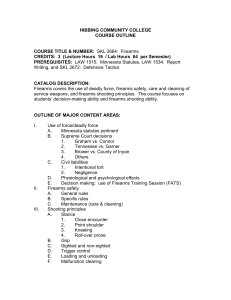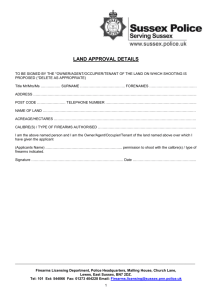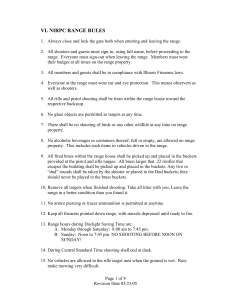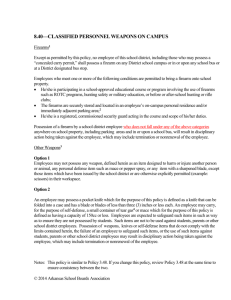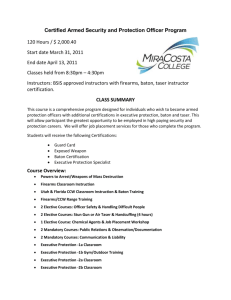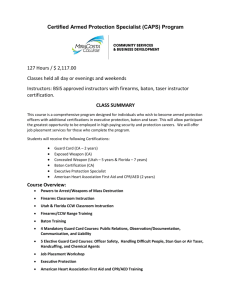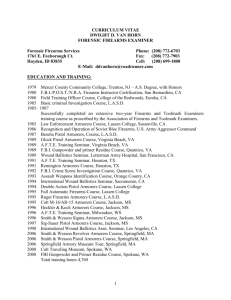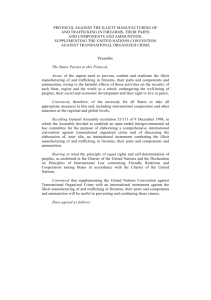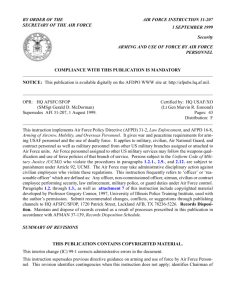IV. Nomenclature
advertisement
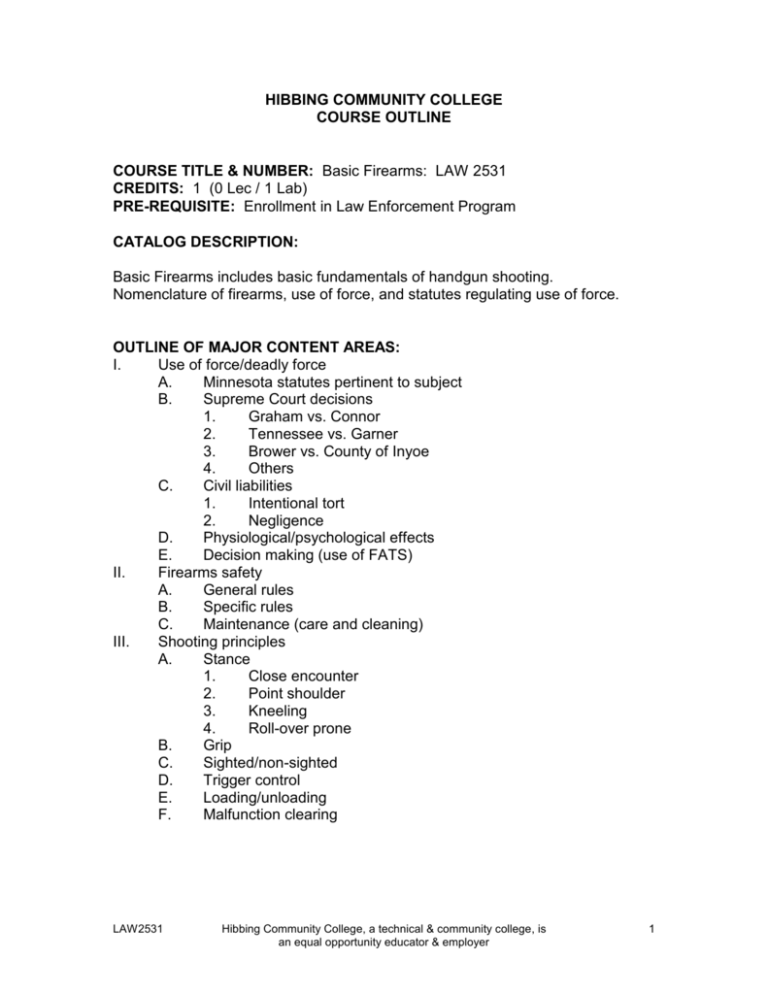
HIBBING COMMUNITY COLLEGE COURSE OUTLINE COURSE TITLE & NUMBER: Basic Firearms: LAW 2531 CREDITS: 1 (0 Lec / 1 Lab) PRE-REQUISITE: Enrollment in Law Enforcement Program CATALOG DESCRIPTION: Basic Firearms includes basic fundamentals of handgun shooting. Nomenclature of firearms, use of force, and statutes regulating use of force. OUTLINE OF MAJOR CONTENT AREAS: I. Use of force/deadly force A. Minnesota statutes pertinent to subject B. Supreme Court decisions 1. Graham vs. Connor 2. Tennessee vs. Garner 3. Brower vs. County of Inyoe 4. Others C. Civil liabilities 1. Intentional tort 2. Negligence D. Physiological/psychological effects E. Decision making (use of FATS) II. Firearms safety A. General rules B. Specific rules C. Maintenance (care and cleaning) III. Shooting principles A. Stance 1. Close encounter 2. Point shoulder 3. Kneeling 4. Roll-over prone B. Grip C. Sighted/non-sighted D. Trigger control E. Loading/unloading F. Malfunction clearing LAW2531 Hibbing Community College, a technical & community college, is an equal opportunity educator & employer 1 IV. V. Nomenclature A. Revolver B. Semi-automatic C. Shotgun D. Center fire/rim fire cartridge E. Shot shell Performance courses A. Day pistol combat 1. Practice 2. Performance B. Shot gun familiarization 1. Rifled slugs 2. Buck shot COURSE GOALS/OBJECTIVES/OUTCOMES: Students will 1. define deadly force statute. 2. demonstrate carrying various weapons. 3. demonstrate cleaning service weapons. 4. demonstrate clearing weapon malfunction. 5. demonstrate point shooting ability. 6. demonstrate safe firearms attitude. 7. demonstrate sight shooting ability. 8. demonstrate weaver stance position. 9. develop instinctive shooting reactions. 10. fire weapon kneeling position. 11. fire weapon prone position. 12. fire weapon standing position. 13. identify deadly force considerations. 14. identify deadly force decisions. 15. identify officer deadly force considerations. 16. identify physiological shooting effects. 17. identify potential civil liabilities. 18. identify potential criminal liabilities. 19. identify psychological shooting effects. 20. identify select felony considerations. 21. identify various ammunition nomenclature. 22. identify various firearms nomenclature. 23. maintain emotional self-control. 24. maintain physical self-control. 25. maintain proper mental alertness. 26. practice range safety rules. 27. safely load semi-automatic pistol. 28. safely load police revolver. 29. shoot handgun qualification course. LAW2531 Hibbing Community College, a technical & community college, is an equal opportunity educator & employer 2 MNTC GOALS AND COMPETENCIES MET: N/A HCC COMPETENCIES MET: Working Productively and Cooperatively Communicating Clearly and Effectively Thinking Creatively and Critically Social Responsibility STUDENT CONTRIBUTIONS: Each student is expected to spend at least 4 hours per week preparing for class. Attendance is critical in this class. Students are expected to practice firearms shooting skills and participate in class discussions and class activities. STUDENT ASSESSMENT SHALL TAKE PLACE USING INSTRUMENTS SELECTED/DEVELOPED BY THE COURSE INSTRUCTOR. SPECIAL INFORMATION: (SPECIAL FEES, DIRECTIVES ON HAZARDOUS MATERIALS, ETC.) Text and References: Minnesota POST Learning Objectives, State of Minnesota POST Board. Firearms Training Manual, Professional Standards Division, International Association of Chiefs of Police. Firearms Training Standards, Activities Division, National Rifle Association of America, Washington, D.C. Minnesota Bureau of Criminal Apprehension. Police Training Section. We cannot plan, and subsequently establish training for every conceivable eventuality or situation which an officer will confront. However, we intend to increase awareness of risks and show various tactics at a basic entry level with the understanding that procedures may change from department to department. AASC APPROVAL DATE: October 19, 2011 REVIEW DATE: October 2016 LAW2531:so 101911 LAW2531 Hibbing Community College, a technical & community college, is an equal opportunity educator & employer 3
